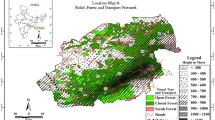Abstract
Eight variable microsatellite loci were analyzed in terms of studying the genetic structure of different generations of a captive population of a rare endemic Russian species, the Siberian crane (Grus leucogeranus Pallas). It was shown that the founding population of natural origin (15 birds) is characterized by high genetic diversity (N A = 6.625, H O = 0.767, H E = 0.731) and a lack of relatedness (R = −0.079). In the total sample of descendents of the founders (122 individuals from generations F1, F1/F2, F1/F3, F2, F2/F3), this characteristic level of genetic variation is being maintained; however, we observed a decrease in allelic richness in some generations (F1/F2, F1/F3, F2). We found a low level of relatedness in the sample of descendents of the founders (F1, F1/F2, F1/F3), while the relatedness was maximal (R = 0.302) in the descendents of the breeders of the first generation. A small sample of breeders related to each other of generations F1 and F2 (eight birds) does not represent the entire gene pool of the founders of the Siberian Crane captive population. In view of this, we discuss the need to form a new genetically heterogeneous generation of breeders that would also include Siberian Cranes from the almost extinct Western Siberian population.
Similar content being viewed by others
References
Kashentseva, T.A., Nursery of rare species of cranes: past and present, in Okskii zapovednik (istoriya, lyudi, priroda) (Oka Reserve (History, People, Nature)), Ryazan’: Russkoe slovo, 2005, pp. 138–169.
Panchenko, V.G. and Kashentseva, T.A., Reproduction of cranes in the nursery of Oka Reserve, in Nauchnye osnovy okhrany i ratsional’nogo ispol’zovaniya ptits (Scientific Basis for the Protection and Sustainable Use of Birds), Ryazan’: Russkoe slovo, 1995, pp. 236–270.
Kashentseva, T.A. and Rozdina, O.I., Captive breeding of cranes, in Zhuravli Evrazii (raspredelenie, chislennost’, biologiya) Cranes of Eurasia (Distribution, Abundance, Biology)), Moscow, 2002, pp. 271–277.
Kashentseva, T.A. and Belterman, R., Siberian Crane-Grus leucogeranus International and EEP Studbook, Oka State Biosphere Nature Reserve, 2009.
Lacy, R.C., Impacts of inbreeding in natural and captive populations of vertebrates: implications for conservation, Perspect. Biol. Med., 1993, no. 36, pp. 480–496.
Lacy, R.C., Managing genetic diversity in captive populations of animals, in Restoration of Endangered Species, Cambridge: Cambridge University Press, 1994, pp. 63–89.
Brewer, B.A., Lacy, R.C., Foster, M.L., and Alaks, G., Inbreeding depression in insular and central populations of Peromyscus mice, J. Hered., 1990, no. 8, pp. 257–266.
Madsen, T., Stille, B., and Shine, R., Inbreeding depression in an isolated population of adders, Vipera berus, Biol. Conserv., 1996, no. 75, pp. 113–118.
Laikre, L., Hereditary defects and conservation genetic management of captive populations, Zoo Biol., 1999, no. 18, pp. 81–99.
Mudrik, E.A., Kashentseva, T.A., Gamburg, E.A., and Politov, D.V., Genetic passportization and identification of Siberian cranes (Grus leucogeranus Pallas) in captivity, Biol. Bull. (Moscow), 2014, no. 3, pp. 208–215.
Walsh, P.S., Metzger, D.A., and Higuchi, R., Chelex-100 as a medium for simple extraction of DNA for PCR-based typing from forensic material, BioTechniques, 1991, vol. 10, no. 4, pp. 506–513.
Meares, K., Dawson, D., Horsburgh, G., et al., Characterisation of 14 blue crane Grus paradise (Gruidae, Aves) microsatellite loci for use in detecting illegal trade, Conserv. Gen., 2008, no. 9, pp. 1363–1367.
Jones, K.L., Henkel, J.R., Howard, J.J., et al., Isolation and characterization of 14 polymorphic microsatellite DNA loci for the endangered whooping crane (Grus americana) and their applicability to other crane species, Conserv. Gen. Res., 2010, vol. 2, no. 1, pp. 251–254.
Hasegawa, O., Ishibashi, Y., and Abe, S., Isolation and characterization of microsatellite loci in the redcrowned crane Grus japonensis, Mol. Ecol., 2000, vol. 9, no. 10, pp. 1677–1678.
Zou, H.F., Dong, H.Y., Kong, W.Y., et al., Characterization of 18 polymorphic microsatellite loci in the red-crowned crane (Grus japonensis), an endangered bird, Anim. Sci. J., 2010, vol. 81, no. 4, pp. 519–522.
Queller, D.C. and Goodnight, K.F., Estimating relatedness using genetic markers, Evolution, 1989, vol. 43, no. 2, pp. 258–275.
Peakall, R. and Smouse, P.E., GENALEX 6: genetic analysis in Excel: population genetic software for teaching and research, Mol. Ecol. Notes, 2006, vol. 6, no. 1, pp. 288–295.
Ponomarev, A., Tatarinova, T., Bubyakina, V., et al., Variation of mitochondrial DNA D-loop sequences in the endangered Siberian crane Grus leucogeranus Pallas, Conserv. Gen., 2004, vol. 5, pp. 847–851.
Tokarskaya, O.N., Petrosyan, V.G., Kashentseva, T.A., et al., DNA fingerprinting in captive population of the endangered Siberian crane (Grus leucogeranus), Electrophoresis, 1995, vol. 16, no. 9, pp. 1766–1770.
Sorokin, A.G., Markin, Yu.M., Panchenko, V.G., and Shilina, A.P., Current state and work on the conservation of western and central populations of Siberian Cranes, Nauchn. Vestn., 2000, no. 4, pp. 74–84.
Vuosalo, E., Siberian Crane wintering in Iran 2011/2012 and 2012/13, Newsletter of Crane Working Group of Eurasia, 2013, no. 12, pp. 64–65.
Shirai, A., Sargolzaei, M., Iwaisaki, H., and Nomura, T., Pedigree analysis of the Japanese population of crested ibis (Nipponia nippon) by gene dropping method, in Proceedings of the Fourth International Iran and Russia Conference, 2004, pp. 26–29.
Author information
Authors and Affiliations
Corresponding author
Additional information
Original Russian Text © E.A. Mudrik, T.A. Kashentseva, K.A. Postelnykh, G.V. Nosachenko, D.V. Politov, 2014, published in Genetika, 2014, Vol. 50, No. 11, pp. 1345–1353.
Rights and permissions
About this article
Cite this article
Mudrik, E.A., Kashentseva, T.A., Postelnykh, K.A. et al. Genetic diversity and relatedness in different generations of the Siberian crane (Grus leucogeranus Pallas) captive population. Russ J Genet 50, 1192–1199 (2014). https://doi.org/10.1134/S1022795414100093
Received:
Published:
Issue Date:
DOI: https://doi.org/10.1134/S1022795414100093




